





Polcortolonum
Application instruction:
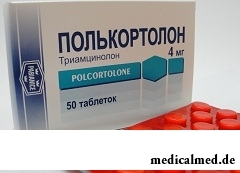 Polcortolonum – the synthetic glucocorticosteroid drug having the expressed antiinflammatory and weak mineralokortikoidny effect, and also having antiedematous, antiallergic and antipruritic effect.
Polcortolonum – the synthetic glucocorticosteroid drug having the expressed antiinflammatory and weak mineralokortikoidny effect, and also having antiedematous, antiallergic and antipruritic effect.
Form of release and structure
- Tablets: a round form, flat, almost white or white color, with a facet, on one party an engraving – "4/mg", on another – "About" (in blisters on 25 pieces, 2 blisters in a cardboard pack);
- Ointment for external use of 0,1%: almost white or white translucent weight with a smell of an ointment basis (in aluminum tubas on 15 g, 1 tuba in a pack cardboard).
Active agent of drug – Triamcinolonum (in the form of acetonide):
- 1 tablet – 4 mg;
- 1 g of ointment – 1 mg.
Excipients of tablets: potato starch, lactose, magnesium stearate.
Additional components of ointment: lanolin, vaseline white, propylene glycol, citric acid.
Indications to use
For tablets:
- Hard proceeding allergic diseases steady against other therapeutic methods: atopic dermatitis, contact dermatitis, seasonal and year-round allergic rhinitis, hypersensitivity reactions to medicines, a serum disease;
- Dermatological diseases: severe forms of eczema, fungoid mycosis, herpetiform violent dermatitis, pemphigus, exfoliative dermatitis, pemphigoid, heavy seborrheal dermatitis, psoriasis of heavy degree, Stephens-Johnson's syndrome (heavy mnogoformny erythema);
- General diseases of connecting fabric: a system lupus erythematosus, a nodular periarteritis, granulematozny giant-cell mesoarteritis, the dermatomyositis recuring a polychondritis, a system scleroderma;
- Rheumatic diseases: Horton's disease, a pseudorheumatism, a rheumatic polimialgiya, rheumatic myocarditis, acute rheumatic fever, a juvenile pseudorheumatism (at resistance to other methods of treatment);
- Endocrine diseases: subacute thyroiditis, primary and secondary insufficiency of bark of adrenal glands, inborn adrenal struma;
- Hematologic diseases: secondary thrombocytopenia at adults, Verlgof's disease (an idiopathic Werlhof's disease) at adults, the acquired autoimmune hemolitic anemia, hemolysis, anemia owing to a marrow hypoplasia, erythroidal (inborn) hypoplastic anemia;
- Neurologic diseases: multiple sclerosis in the period of an aggravation, tubercular meningitis with the subarachnoidal block or risk of its development (in a combination with antitubercular therapy);
- Musculoskeletal system diseases: an acute tendovaginitis, an acute and subacute bursitis, the posttraumatic osteoarthritis ankylosing a spondylarthritis, psoriasis arthritis, an epicondylitis;
- Diseases of a respiratory organs: Leffler's syndrome, an aspiration pneumonitis, a symptomatic sarcoidosis, a berylliosis, a severe form of bronchial asthma disseminated or a fulminant pulmonary tuberculosis (in a combination with antitubercular therapy);
- Serious acute and chronic illness of eyes of inflammatory character: sympathetic ophthalmia, optic neuritis, heavy slow uveitis (front and back);
- Liver diseases: chronic active hepatitis, alcoholic hepatitis with encephalopathy;
- Oncological diseases: acute leukoses at children, lymphoma and leukoses at adults;
- Hypercalcemia at malignant new growths.
Besides, Polcortolonum in tablets is applied to treatment and the prevention of graft rejection at change of fabrics or bodies (in a combination with other immunodepressive means).
For ointment:
- Dermatitis (including allergic, contact and seborrheal);
- Prurigo;
- Eczema;
- Multiformny erythema;
- Strophulus;
- Stings of insects.
Contraindications
For tablets:
- System mycoses;
- Children's age up to 3 years;
- Lactation (or feeding should be interrupted);
- Hypersensitivity to drug components.
For ointment:
- Chicken pox;
- Fungus and viral diseases of skin;
- Tuberculosis cutis;
- Perioral dermatitis;
- Pink and vulgar eels;
- Trophic ulcers of shins owing to a varicosity;
- Precancerous conditions of skin;
- Skin new growths;
- Children's age up to 2 years;
- Hypersensitivity to any component of drug.
In the tablets Polcortolonum with care apply in the following cases:
- Parasitic and infectious diseases of the fungal, bacterial and virus nature (including recently postponed, including recent contact with the patient): chicken pox, a viremichesky phase of the surrounding herpes, a herpes simplex, measles, active and latent tuberculosis, an amebiasis, system mycosis, a strongyloidosis and suspicion on it (at serious infectious diseases drug can be used along with performing specific therapy);
- Immunodeficiency (including syndrome of the acquired immune deficit (SAID) and human immunodeficiency virus (HIV));
- The vaccinal period (8 weeks to and 2 weeks after vaccination);
- Lymphadenitis after BTsZh inoculation;
- Digestive tract diseases: nonspecific ulcer colitis with threat of perforation or abscessing, gastritis, an esophagitis, an acute and latent round ulcer, a diverticulitis, recently created intestines anastomosis, a peptic ulcer of a stomach and a 12-perstny gut;
- Diseases of cardiovascular system, including dekompensirovanny chronic heart failure, lipidemia, arterial hypertension, recently postponed myocardial infarction;
- Endocrine diseases: a diabetes mellitus (including disturbance of tolerance to carbohydrates), a hypothyroidism, a thyrotoxicosis, Itsenko-Cushing's disease;
- Open and closed-angle glaucoma;
- Obesity of the III-IV degree;
- Chronic renal and/or liver failure of heavy degree;
- System osteoporosis;
- Myasthenia;
- The hypoalbuminemia and states contributing to its emergence;
- Nefrourolitiaz;
- Poliomyelitis (except for a form of bulbar encephalitis);
- Acute psychosis;
- Pregnancy.
Ointment Polcortolonum should be applied with care to patients (especially advanced age) with poorly expressed hypodermic fatty tissue, and also during pregnancy and a lactation.
Route of administration and dosage
Tablets
In this dosage form Polcortolonum is accepted inside during meal usually 1 time a day, in the morning (according to a day-night rhythm of secretion of endogenous glucocorticoids), but in certain cases the doctor can recommend division of a daily dose into several receptions.
The dose for each patient is established individually depending on indications, the general state and efficiency of the carried-out therapy.
The daily dose for adults and teenagers is more senior than 14 years can fluctuate ranging from 4 to 48 mg, for children up to 14 years – 0,1-0,5 mg/kg.
Regardless of a disease it is recommended to appoint Polcortolonum in a minimal effective dose. In the course of treatment if there is a need, the dose is gradually reduced.
In case of the admission of the next dose it is necessary to accept drug as soon as possible, but if already time of the following reception comes, then the passed dose does not need to be accepted. It is also impossible to accept a double dose at once.
Ointment for external use
In this dosage form Polcortolonum it is necessary to inflict a thin layer on area defeats and to rub.
In an initiation of treatment frequency rate of use makes 2-3 times a day, then it is reduced to 1-2 times.
At an excessive likhenization or a hyperkeratosis drug can be applied under an occlusive bandage, but it is no more than 1 time within 24-48 hours.
Treatment duration depending on a clinical situation – 1-2 weeks if drug is applied on face skin – no more than 7 days.
To children 2 years are more senior it is possible to apply ointment only 1 time a day on bodies, small on surface area, without affecting face skin.
Side effects
Possible side effects at use of Polcortolonum in tablets:
- From endocrine system: an Icenco-Cushing syndrome (including a hirsutism, obesity of pituitary type, a crescent-shaped face, a myasthenia, an amenorrhea, a dysmenorrhea, striya, increase in arterial pressure), secondary gipotalamo-pituitary and adrenal insufficiency (especially at stressful situations – diseases, injuries, surgical interventions), a hirsutism, decrease in tolerance to glucose, disturbances of a menstrual cycle, manifestation of a latent diabetes mellitus and increase in need for insulin or peroral hypoglycemic means at patients with a diabetes mellitus, a delay of sexual development and suppression of growth at children;
- From the alimentary system: digestion disturbances, a hiccups, raised or a hyporexia, nausea, vomiting, a meteorism, an erosive esophagitis, pancreatitis, steroid stomach ulcer and a 12-perstny gut with a possible perforation and bleeding; seldom – increase in activity of hepatic transaminases and an alkaline phosphatase;
- From cardiovascular system: changes, characteristic of a hypopotassemia, on the electrocardiogram, hypercoagulation, arterial hypertension, arrhythmias, fibrinferments, strengthening of expressiveness or development of chronic heart failure (at predisposed patients), bradycardia (up to a cardiac standstill); patients with an acute and subacute myocardial infarction have a delay of formation of cicatricial fabric and distribution of the center of a necrosis owing to what the rupture of a cardiac muscle is possible;
- From the central and peripheral nervous system: вертиго, hallucinations, a disorientation, a headache, a cerebellum pseudoneoplasm, a sleep disorder, nervousness or concern, spasms, euphoria, a depression, maniac-depressive psychosis, paranoia, a delirium, the brain pseudoneoplasm which is shown a headache, deterioration in visual acuity or doubling in eyes (increase in intracranial pressure with a syndrome of a congestive optic papilla; most often at children, usually after too bystry dose decline);
- From a musculoskeletal system: delay of growth and processes of ossification at children (premature closing of epiphyseal regions of growth), a steroid myopathy, muscular weakness, decrease in muscle bulk (atrophy), a rupture of sinews of muscles, osteoporosis (it is very rare – pathological fractures of bones, an aseptic necrosis of a head humeral and a femur, pathological fractures of long tubular bones, compression spinal fracture);
- From a metabolism: a hypocalcemia, the increased calcium removal, a hypernatremia, peripheral hypostases (a delay of sodium and liquid in an organism), increase in body weight, a hyperglycemia, a gipokaliyemichesky syndrome (a hypopotassemia, a spasm of muscles or a mialgiya, arrhythmia, unusual weakness, fatigue), the strengthened sweating, a glucosuria, negative nitrogenous balance as a result of a protein catabolism;
- From an organ of sight: tendency to development of consecutive fungal, viral or bacterial infections of eyes, an exophthalmos, glaucoma, increase in intraocular pressure with possible injury of an optic nerve, a back subkapsulyarny cataract, trophic changes of a cornea;
- Dermatological reactions: thinning of skin, delay of healing of wounds, petechias, striya, ecchymomas, tendency to development of a pyoderma and candidiasis, hematoma, steroid eels;
- Allergic reactions: itch, skin rash, acute anaphylaxis;
- Others: withdrawal, leukocyturia; in case of simultaneous use of immunodepressants or vaccination – development and an exacerbation of infections.
Expressiveness and frequency of development of side effects depend on a dose of drug, duration of its use and a possibility of observance of a circadian rhythm of appointment. At short-term courses of treatment undesirable reactions are observed seldom.
Ointment Polcortolonum at prolonged use can cause the following local reactions in the field of putting drug: bruises, skin hemorrhages, irritation and erubescence, atrophy of a hypodermic fatty tissue, hyperkeratosis, striya, epidermis overgrowth, healing process delay.
Special instructions
Tablets
In case of stressful situations parenteral administration of glucocorticosteroids (GKS) is recommended to patients who accept Polcortolonum orally.
At the sudden termination of treatment development of insufficiency of bark of adrenal glands and a withdrawal therefore the dose of drug should be reduced gradually is possible.
Polcortolonum can mask symptoms of infectious process, reduce resistance of an organism to an infection and ability to restriction of its distribution.
During treatment by this drug it is not necessary to carry out immunization by live virus vaccines. At introduction of the inactivated bacterial or virus vaccine can not occur the expected increase in quantity of antibodies. Besides, GKS increase risk of development of neurologic complications during vaccination.
Action of Triamcinolonum amplifies at patients with cirrhosis and a hypothyroidism.
Patients should appoint Polcortolonum with care with a prothrombinopenia who receive acetylsalicylic acid.
At long therapy of children it is necessary to control their growth and development carefully.
Ointment for external use
Due to the increased risk of development of side effects ointment is not recommended to be rubbed in face skin.
Not to apply on skin around eyes.
During pregnancy and a lactation medicine can be appointed only in exceptional cases, it is necessary to apply it on limited sites of skin and is short-term. The feeding women cannot apply on skin of mammary glands.
Medicinal interaction
Possible reactions of interaction at simultaneous use of Polcortolonum in the form of tablets along with other medicines:
- Cardiac glycosides: the risk of development of disturbances of a cordial rhythm and other toxic effects connected with a hypopotassemia increases;
- Anticonvulsants, barbiturates, глютетимид, rifampicin: metabolism decreases and action of Triamcinolonum is weakened;
- Blockers histamine H1 receptors: the effect of Triamcinolonum decreases;
- Karboangidraza inhibitors, Amphotericinum In: the risk of development of a hypopotassemia, circulatory unefficiency, hypertrophy of a myocardium of a left ventricle increases;
- The hormonal contraceptives containing estrogen: action of Triamcinolonum amplifies;
- Anabolic steroids, androgens: the risk of development of peripheral hypostases, appearance of eels increases (such combination demands care, especially in the presence of diseases of a liver and heart);
- Paracetamol: the probability of developing of peripheral hypostases, hypocalcemias, hypernatremias, osteoporosis, increase in removal of calcium and a hepatotoxic of paracetamol increases;
- Holinoblokatora (atropine): the risk of increase in intraocular pressure increases;
- Anticoagulants (heparin, индандион, coumarin derivatives), urokinase, Streptokinasa: efficiency of Polcortolonum changes (at some patients – decreases, at others – raises; in this case it is necessary to define a dose depending on a prothrombin time, risk of a canker and bleeding from digestive tract);
- Tricyclic antidepressants: the mental disturbances caused by reception of Polcortolonum amplify (such combination is not recommended);
- Insulin and peroral hypoglycemic drugs: their action because of what concentration of glucose in blood increases is weakened (correction of doses is required);
- Anti-thyroid drugs, hormones of a thyroid gland: function of a thyroid gland can change (in this case dose adjustment or cancellation of these medicines is required);
- Kaliysberegayushchy diuretics, laxative drugs: their action is weakened, the risk of development of a hypopotassemia appears;
- Ephedrine: Triamcinolonum biotransformation accelerates (dose adjustment of Polcortolonum can be required);
- Immunodepressants: the probability of development of infections, lymphoma and other limfoproliferativny diseases increases;
- Isoniazid: its concentration in a blood plasma decreases (generally at patients with bystry acetylation; change of a dose of drug is required);
- Meksiletin: his metabolism accelerates and concentration in a blood plasma decreases;
- The depolarizing muscle relaxants: duration of neuromuscular blockade at patients with the hypocalcemia connected using Polcortolonum can increase;
- Non-steroidal anti-inflammatory drugs (including acetylsalicylic acid), alcohol: the risk of a canker and bleeding from digestive tract increases;
- Folic acid: its effect decreases (increase in its dose can be required);
- Live virus vaccines: development of viral diseases, replication of viruses and decrease in development of antibodies is possible (these combinations are not recommended);
- Other vaccines: development of antibodies decreases, the probability of development of neurologic complications increases;
- Drugs of sodium and the food containing sodium: the risk of emergence of peripheral hypostases and development of arterial hypertension increases (in this case cancellation of drugs of sodium and introduction of restrictions to a diet is required).
During treatment Polcortolonum it is not necessary to carry out by ointment for external use vaccination.
Terms and storage conditions
To store in the place, dry, dark, unavailable to children, at a temperature up to 25 ºС.
Period of validity of tablets – 3 years, ointments – 2 years.
Name of drug
Price
Drugstore
Polcortolonum тбл 4 mg No. 50, Polfa/Pabianickie PW
490 rub.
 Network of the Moscow drugstores of IFC
Network of the Moscow drugstores of IFCFour segments of dark chocolate contain about two hundred calories. So if you do not want to recover, better not to eat it is more than two segments in days.

Cold is such painful that each sigh becomes a victory, heat "knocks" down, and the ache in joints forces to think only about...
Section: Articles about health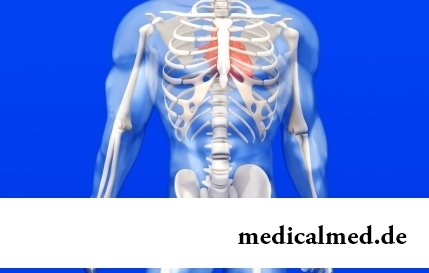
For many women the word "fat" sounds as a sentence. In aspiration to an ideal figure they try to exclude, first of all, from the menu all dishes containing fats without having at the same time a clear idea of a role of these substances in exchange processes, and about an afterbirth...
Section: Articles about health
An eye of the person daily experiences considerable strain. The problem of preservation of sight is for many years directly connected with a question of supply of tissues of eye enough oxygen and nutrients. This task is carried out by small vessels – capillaries. For normal functioning of the visual device extremely important that they kept the integrity, but it works well not always. Microtraumas of eye vessels during which there are small hemorrhages it is extraordinary расп...
Section: Articles about health
According to World Health Organization, every third inhabitant of Earth has excess weight, and every tenth suffers ожирен...
Section: Articles about health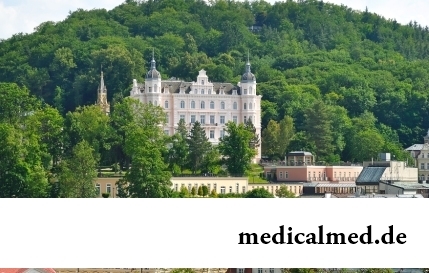
People know that thermal sources have salutary force long ago. Treatment by natural waters is one of the most ancient methods of disposal of the most different diseases. Bathtubs, souls, wrappings and inhalations, in combination with reception of water vnut...
Section: Articles about health
About influence of fasting days on an organism it is told much – both about advantages, and about shortcomings. It is considered that fasting day in the form of a short-term monodiet is useful, promoting effective removal of slags from an organism whereas irregular, excessively long, spontaneous fasting days lead only to deterioration in health. How to derive benefit from the sparing diet and not to do much harm to itself? Let's consider the main advantages and shortcomings of fasting days and their influence on an org...
Section: Articles about health
The climax, or menopause is the normal process of the termination of genital function of the woman which is followed serious hormonal...
Section: Articles about health
Good appetite was always considered as a sign of good health. The correct operation of the mechanism which is responsible for the need for nutrients and receiving pleasure from process of its satisfaction demonstrates that the organism functions without special from...
Section: Articles about health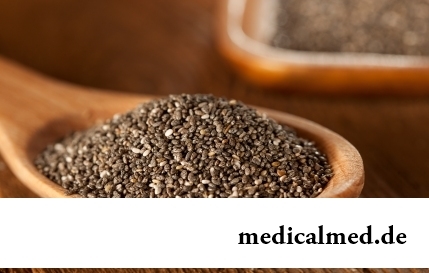
The chia plant, or the Spanish sage, is from South America. The indigenous people of the continent since ancient times used its seeds in food: small, but very nutritious kernels, in a form the reminding fasolina. Indians knew about useful properties of seeds of a chia, and applied them to maintenance of vitality and increase in endurance before serious exercise stresses....
Section: Articles about health
Cold, puffiness of a nose, itch, the watering eyes - characteristic symptoms of the allergic rhinitis resulting from hit and...
Section: Articles about health
Cystitis, or inflammation of a mucous membrane of a bladder, this very widespread disease which, owing to some features of a structure of bodies of urinogenital system, women have approximately four times more often than men. In the main risk group...
Section: Articles about health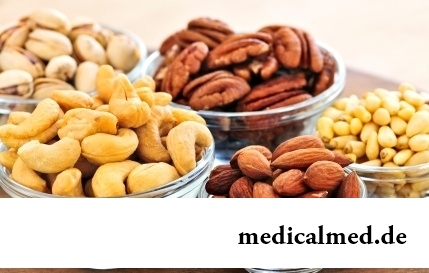
When overcomes feeling of hunger, and an opportunity to have dinner fully is absent, having a snack − the meals, small on volume, stabilizing sugar level in blood comes to the rescue. The relation of nutritionists to having a snack more often negative, but only because as snack people choose the most caloric products with the increased amount of "bystry" carbohydrates: cookies, rolls, chips, candies. Nevertheless, the advantage of having a snack is obvious to weight loss: the person avoids strong feeling of hunger...
Section: Articles about health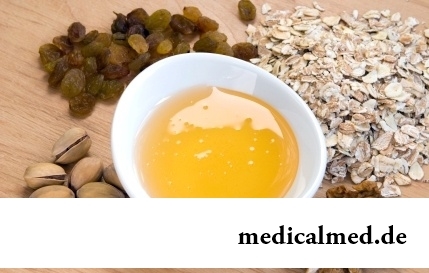
Let's begin with the fact that a separate illness which is called "adjournment of salts", just does not exist. In practice this household name of plank beds...
Section: Articles about health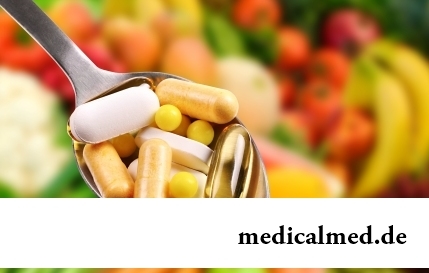
The medicine promptly develops, and the fact that else quite recently it seemed by miracle can now. We are not surprised any more to the fact that people with artificial joints and extremities can play sports, organ transplantation became a routine, and the latest cancer medicine п...
Section: Articles about health
Separate food - the system of meal based on digestion physiology which is carried to improvement methods. According to nutritionists, the separate use of the carbohydrate and proteinaceous products demanding different conditions of assimilation helps to get rid of diseases of digestive tract and serves as prophylactic from a diabetes mellitus, arthritis, food allergies, cholelithiasis and many other frustration. The essence of salutary effect of a method consists in most Kacha...
Section: Articles about health
According to data of World Health Organization, the cataract is diagnosed almost for 7% of the population of Earth. Statistics we get sick...
Section: Articles about health
Heart disease and blood vessels lead to disturbance of blood supply of bodies and fabrics that involves failures in their work, deterioration in health of the person, decrease in its working capacity and standard of living. Annually such perishes from pathologies more...
Section: Articles about health
So, you resolved to lose weight. And now you try to understand what to begin with: from exercise stresses or a diet? And how to make that process of weight loss did not give you an inconvenience, and, on the contrary, brought joy?...
Section: Slideshow
The person, as well as all other beings living on our planet feels weather changing. It is normal meteosensitivity, not...
Section: Articles about health
During foot walks blood moves on vessels more actively and one and all bodies are supplied with a large amount of oxygen. It affects the state of health of the person very positively....
Section: Slideshow
Scientists always aimed to offer fundamental explanations for medical problems. Their theories formed the basis of modern methods of treatment of the hardest pathologies and helped to save a set of lives. However stories are known also such theoretical constructions, following to which brought to mankind of a trouble and torture, ruined destinies and health of many people....
Section: Articles about health
The state of health of the person depends on many factors. One of the most important is the constant but which is not exhausting, motive...
Section: Articles about health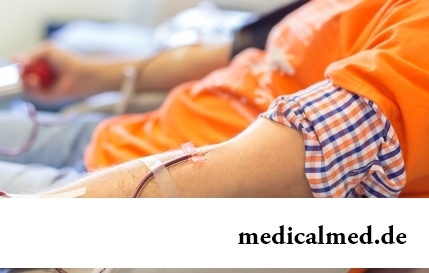
Transfusion of donor blood has almost century history. In spite of the fact that this procedure is quite usual for many people, process of blood donation is still surrounded with numerous myths. Today we aimed to discredit the most widespread of them....
Section: Articles about health
Statistically, at the address to doctors seven of each ten patients complain of a headache. Actually it is much more people who are periodically feeling unpleasant feelings such. Many people, apart from a headache the reason for serious fears, prefer to muffle independently the next attack medicines. Such behavior is extremely careless, especially if this symptom appears regularly and is followed by other signs of an indisposition. Constants head Bol...
Section: Articles about health
Any of us is not insured from a heavy illness of the loved one. Happens and so that someone from family members becomes lying бо...
Section: Articles about health
Impossibility to conceive the child – a trouble of many Russian families. During quite long time was considered that main "culprits" of troubles such are women. Modern physicians claim that the situation is different: about a half of failures at...
Section: Articles about health
From the failure of work of immune system which is shown in the form of an allergy, statistically, more than 40% of the population of the globe suffer. In most cases pathological reactions cause the substances which are contained in food stuffs, hair of animals, medicines, goods of household chemicals, cosmetics, pollen of plants, etc. On the one hand, the disease such is capable to spoil quite thoroughly to the person life....
Section: Articles about health

